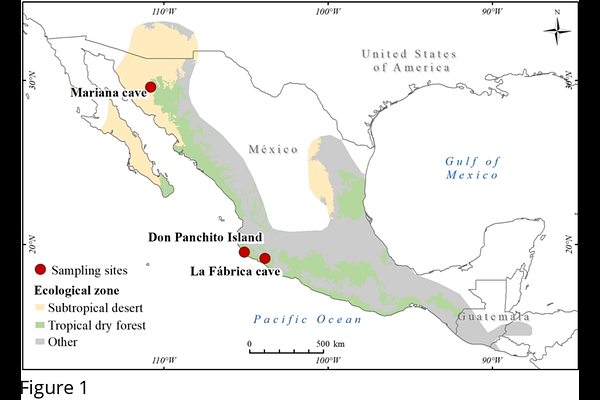Total immunoglobulin G variation through the phenological cycle of migrant and resident Long-nosed bats (Leptonycteris yerbabuenae) in the drylands of Mexico and its relationship with bacterial-killing ability of plasma.

Total immunoglobulin G variation through the phenological cycle of migrant and resident Long-nosed bats (Leptonycteris yerbabuenae) in the drylands of Mexico and its relationship with bacterial-killing ability of plasma.
Rivera-Ruiz, D. A.; Flores-Martinez, J. J.; Rosales, C.; Falcon, L. I.; Solano de la Cruz, M. T.; Herrera M., L. G.
AbstractImmunological variations of bats throughout their life cycle represent an underexplored and controversial topic that has great potential for understanding their immunology. This gap is particularly large regarding the state of immunity during early life and migration, and how different immune components interact with each other. In this study, the partial migratory long-nosed bat (Leptonycteris yerbabuenae) was used as a model to assess the state of acquired humoral immunity (total IgG concentration, tIgG) during early life, during the reproductive cycle and at the extremes of the migratory range of females. We also determined the relationship of tIgG with plasma bactericidal activity against Escherichia coli. The concentration of tIgG was stable throughout the reproductive cycle of adults, and no significant changes were detected at the extremes of the migratory range of females. However, tIgG concentration was reduced during early life (2 to 3 months of age) and in non-reproductive males in March-May 2019 relative to non-reproductive males in March 2020. The tIgG concentration had a positive relationship with plasma bactericidal ability in non-reproductive females, but no relationship was observed in non-reproductive males and reproductive females. These results suggests that tIgG concentration is resilient to physiological and ecological changes experienced by adults throughout their reproductive and migratory cycle. The reduction of tIgG during early life suggests that young individuals have not developed an IgG pool comparable to that of adults. Finally, the positive relationship observed between tIgG and BKA in non-reproductive females suggests that E. coli clearance is enhanced by the presence of antibodies that facilitate the elimination of this bacteria.